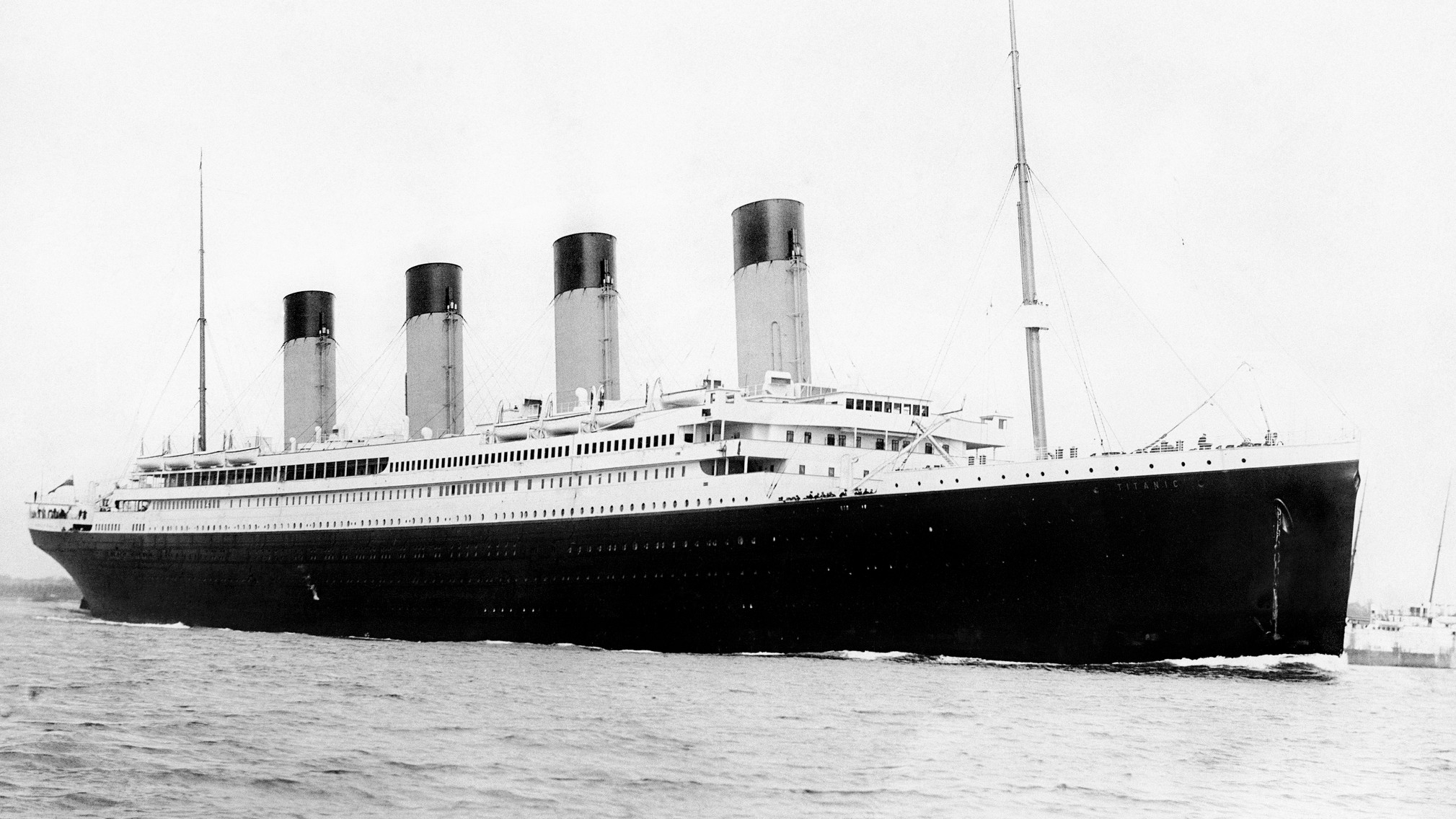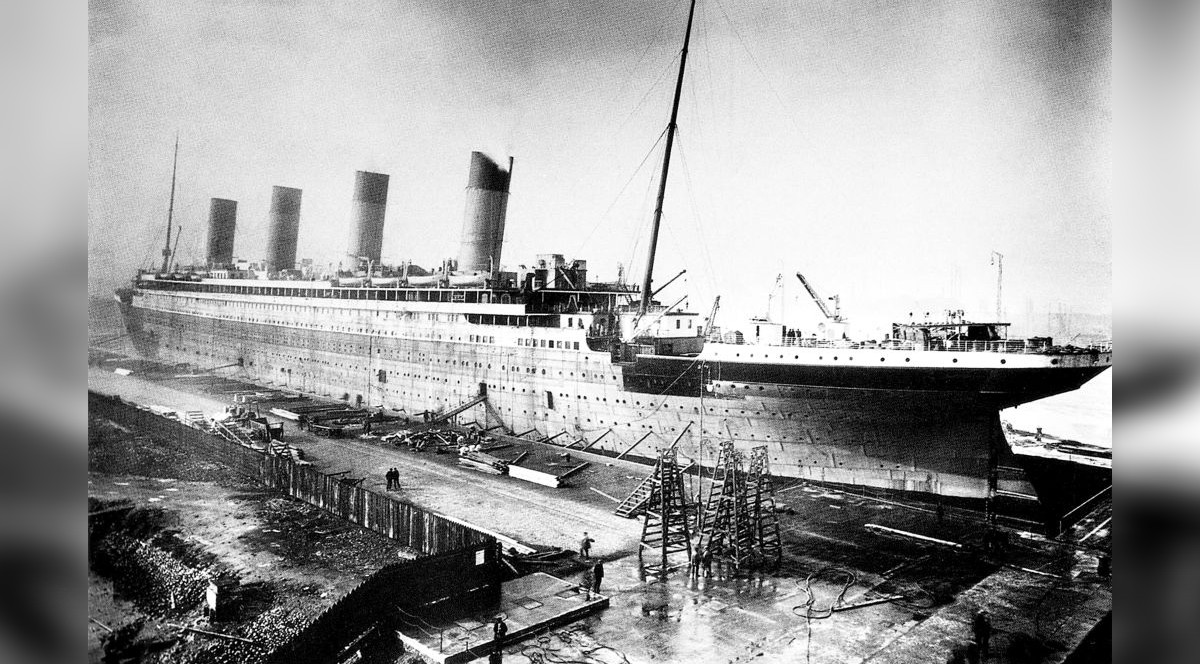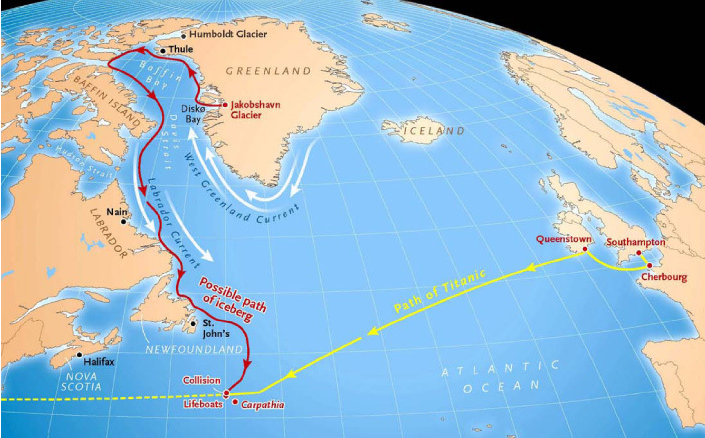The Titanic: The true story behind the 'unsinkable' ship
The facts behind one of the most famous disasters in history

The air was buzzing with excitement ahead of the launch of the RMS Titanic on April 10, 1912. The new ship was the largest moving human-made object in the world. It had a number of innovative features, including remotely sealable compartments that led it to be deemed "unsinkable."
On its maiden voyage, more than 2,000 passengers and crew boarded the Titanic along its route from Southampton, England, to New York City. However, for most of them, it would be the last trip they ever made.
When was the Titanic built?
The RMS Titanic was built by the White Star Line, which was a competitor to another shipbuilding company, Cunard. In 1906, Cunard made major waves by building the Lusitania and the Mauretania, which set speed records crossing the Atlantic. To compete, White Star Line decided to build several large vessels known for their comfort instead of their speed, according to the Molly Brown House Museum: the Olympic, the Titanic and the Britannic.
The Titanic was completed March 31, 1912, in Belfast, at a cost of $1.5 million (the equivalent to more than $47 million today), according to the National Archives. It took more than two years to build.. The ship was 883 feet (270 meters) long, or more than four city blocks, and more than 92 feet (28 m) high. It weighed an incredible 46,500 tons (42,000 metric tons), according to the Royal Museums Greenwich.

The Titanic began its journey in Southampton, England, and then sailed to Cherbourg, France, and Queenstown, Ireland (now known as Cobh), according to the Titanic Belfast museum. It sped west toward New York on April 10. The ship had the capacity to hold 3,320 passengers and crew, but it set sail carrying just 2,240 passengers and crew, according to the National Oceanic and Atmospheric Administration (NOAA) . Passengers were a diverse mix, including wealthy tourists and working-class immigrants from Germany and Ireland searching for new opportunities in the land promising the "American dream."

The Titanic was designed to prioritize comfort rather than speed, but was comfort also prioritized over safety? It carried some of the richest people in the world at that time and was a huge leap forward in luxury travel. Conditions in second-class cabins were similar to other cruise ships' first class, and the Titanic's passengers were provided with gyms, pools, libraries and huge restaurants.
Problems with the vessel occurred from the outset, with a series of accidents and near-misses. While the deaths of those aboard the Titanic when it sank are well documented, the first victims were, in fact, some of its builders. It took around 3,000 men to build the massive ship over two years. During construction, before the ship had even touched water, eight workers lost their lives, according to the National Geographic Society.
On April 14, 1912, a nearby ship, the SS Californian, sent a message at 11 p.m. the ship's time, to the Titanic that said, "We are stopped and surrounded by ice." But the captain of the Titanic, Edward Smith, and First Officer William Murdoch did not heed these warnings and steamed ahead at near full speed.
When did the Titanic sink?

During the evening of April 14 and into the morning of April 15, 1912, just four days after setting off, the Titanic sank.
"Iceberg, right ahead!" Frederick Fleet, the man who first spotted the icy death trap, yelled just before 11:40 p.m. on April 14, according to Fredrick Fleet's testimony in the British Wreck Commissioner's Inquiry into the sinking of the Titanic.
As one of two lookouts, alongside Reginald Lee, Fleet was keeping watch when Titanic hit the iceberg. Spotting danger in the water was made more difficult than usual that night, as the sea was incredibly calm. This reduced the ability to spot objects in the water, as no telltale waves were crashing against the iceberg.
In an attempt to avoid the quickly approaching iceberg, the ship made a sudden turn to the left, causing it to sideswipe the iceberg. The ice punched holes in the starboard (right side) along a nearly 300-foot (90 m) stretch of the boat, and it began filling with water.
Two hours and 40 minutes after hitting the iceberg, the ship lay in pieces below the surface of the Atlantic.
Why did the Titanic sink?
Six of the ship's 16 water-tight compartments started filling with water upon the iceberg impact. This was enough to make the ship start to sink, at which point the water flowed off the top of these compartments (the "transverse bulkheads") and began filling the other compartments. Modern estimates suggest that the boat could have possibly limped to shore with only four breached compartments, according to Britannica.
With six compartments leaking, however, the Titanic's fate was sealed — it had lost too much buoyancy to remain afloat, no matter how well it was built.
That said, it took nearly three hours for the Titanic to sink; when the ship's engineer heard that six compartments were leaking, he predicted it would stay afloat for only 1 to 1.5 hours, according to Titanic expert Parks Stephenson.
In 1998, scientists at the National Institute of Standards and Technology (NIST) also discovered that the hull sustained a series of thin gashes, rather than one large gash, as was originally believed. The poor quality of the iron used in rivets holding the hull, which contained three times the amount of slag (a glassy residue formed during smelting), may have contributed to Titanic's rapid demise, according to NIST. Under cold temperatures, slag can become more brittle, which may have contributed to the rivet head breaking off upon impact with the iceberg.
As the front filled with water and sunk into the ocean, the back of the ship lifted out of the water. This placed tremendous pressure on the middle of the boat. It eventually cracked, and the front of the ship crashed back into the ocean; the ship sank at 2:20 a.m. on April 15.
How deep is the Titanic?
The wreck of the Titanic sits on the ocean floor about 12,467 feet (2.4 miles; 3,800 m; 3.8 km) below the surface, according to NOAA. At this depth, there is a pressure of about 380 atmospheres.
Titanic passengers and survivors
The Titanic carried only 16 lifeboats, as well as four "collapsibles," which in total could accommodate only a third of the Titanic's total passengers had the ship been fully filled, according to the Institute of Mechanical Engineers. As it was, it could have accommodated only half of the passengers aboard. While this may seem unforgivable by today's standards, the Titanic actually carried more lifeboats than necessary under the law at the time. In the aftermath of the sinking, laws were put in place to prevent this from happening again and required ships to carry more lifeboats, according to the International Maritime Organization.
All of the Titanic's survivors were rescued by the Carpathia, which received the Titanic's distress signal and immediately set off toward the Titanic. It didn't get there until about 4 a.m., however, according to Encyclopedia Titanica.
Some of the Titanic's passengers were prominent people, including John Jacob Astor IV, one of the wealthiest men in the world at that time. So were Ida and Isidor Straus, who co-owned the Macy's department store. And, of course, there was "Unsinkable" Molly Brown, a socialite who became famous when she exhorted her lifeboat to return to look for survivors and ultimately survived the ordeal herself.
Astor didn't survive; he didn't take the reports that the ship was sinking seriously and later wasn't allowed onto a lifeboat due to a "women and children first" policy. (His pregnant wife did survive, however.) Of the total people saved from the disaster, 70% of women and children were saved and only 20% of men were saved, according to 2012 a study published by Uppsala University in Sweden. Ida Straus initially boarded a lifeboat but returned to her husband, reportedly saying "Where you go, I go", according to The National Archives in the U.K.. The couple died together. (He was 67; she was 63.)
When was the Titanic found?
The wreck of the Titanic was discovered on Sept. 1, 1985, according to the Woods Hole Oceanographic Institution (WHOI). In a joint mission between WHOI and the French National Institute for Ocean Science (IFREMER), research teams, led by WHOI's Robert Ballard and IFREMER's Jean-Louis Michel, narrowed down the site of the wreck to an area of 100 square miles (259 square kilometers) in the middle of the Atlantic Ocean. Using the sonar capabilities of two underwater vehicles called Argo and SAR, the teams followed a trail of debris straight to the ship's hull.
Initially, Ballard and his colleagues were in the Atlantic on a secret mission to help the U.S. Navy find two sunken nuclear submarines, U.S.S. Thresher and U.S.S. Scorpion, according to National Geographic. But the crew located the subs faster than expected, and spent the remaining 12 days searching for the Titanic, which was Ballard's longtime goal.
In May 2023, scientists completed the first full-scale digital scan of the Titanic shipwreck, and in June 2023, a submersible being piloted near the Titanic wreck went missing.
Additional information
For more about the mechanics of the RMS Titanic, check out "Anatomy of the Titanic," by Tom McCluskie, and visit the Titanic inquiry Project for witness accounts of the day it sank.
Sign up for the Live Science daily newsletter now
Get the world’s most fascinating discoveries delivered straight to your inbox.
- Scott DutfieldContributor











